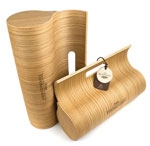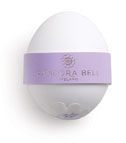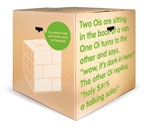
Our retail landscape is changing daily with pop-up shops and e-stores jostling for consumer attention alongside traditional retail outlets. But regardless of the format in question, the emphasis needs to be firmly placed on the emotional connection of the retail experience.
That’s why today’s packaging has to be so much more than just the key physical touchpoint for the brand. It has to be more tactile and more tactical-using the “physical” to form a new relationship with the consumer.
The emotional response to the experience of opening packaging has underpinned the packaging design strategy for the luxury and gifting sectors for years. Gift-givers have always relied on packaging to be as good as the gift, and to heighten the anticipation and the sense of “reveal” with ribbons to untie, boxes to open and layers of tissue to unfold.
However, it is becoming increasingly difficult to be novel and innovative without demeaning the luxury experience and the premium nature of the product or countering unnecessary material and waste. Consumers still want luxury and gifting, but they do not want their first experience marred by ecological concerns. They want brands to find clever design solutions with more sustainable materials and processes.
A good example is in Greek winemaker Ktima Gerovassiliou’s new wine gift box. Made from oak plywood to reflect the barrels used to mature the wine, the shape of the box molds to the shape of the wine bottles themselves. Holding two bottles, the “box” can be carried like a bag with no need for additional packaging. It’s also reusable-several can be stacked together to create a wine rack. The concept is integral, sustainable and innovative-and, ultimately, a more premium, tactile and stylish answer to presenting, transporting and storing wine.

Gifting and luxury aside, the spotlight on the opening experience spans market sectors as diverse as food and furniture. UK company Graze provides a home or work delivery service for its hand-picked and healthy nut and seed snacks. The outer packaging takes on the look of the traditional, brown corrugated pizza-box container, but, inside, the sense of reveal, interaction and seduction is just sublime. The snacks are conveniently sectioned off and covered with a clear protective film, and a vibrant photo of grass on the inside front cover reinforces the healthy nature of “grazing.”
Of course, when it comes to the opening experience, there are some exemplarily models that we all aspire to. Think Apple. For millions of Mac and iPod users, the cult-like brand experience begins with the box. It’s not just in the sleek graphics and smooth surfaces but, most notably, in the way the layers of packaging slowly reveal the components just as the user needs them-a ballet of unwrapping. The brand can be credited with influencing a much more simplified opening experience for the entire consumer electronics sector over the last decade.
If we look at another icon, Nestlé’s Kit Kat, we learn an important lesson about the perils of overlooking the opening experience. When Nestlé decided to ditch its characteristic silver foil in favor of flow wrap plastic packaging, the company found itself working to manage a public backlash. For many, the ritual of taking off the wrapper with mouth-watering anticipation was a key part of the chocolate-eating experience and the defining experience for the Kit Kat brand.


The initial experience has always been important for a small sector of brands, but it’s now become a universal concern. Packaging design must now find new and clever ways to deliver something totally disproportionate to consumer expectation-to have the scope to tell, or at least tease out, the story of the brand by focusing on the texture, look and delivery of what consumers are buying and, of course, what they’re ultimately opening.
Jonathan Ford is a
designer and creative partner at Pearlfisher, www.pearlfisher.com.
